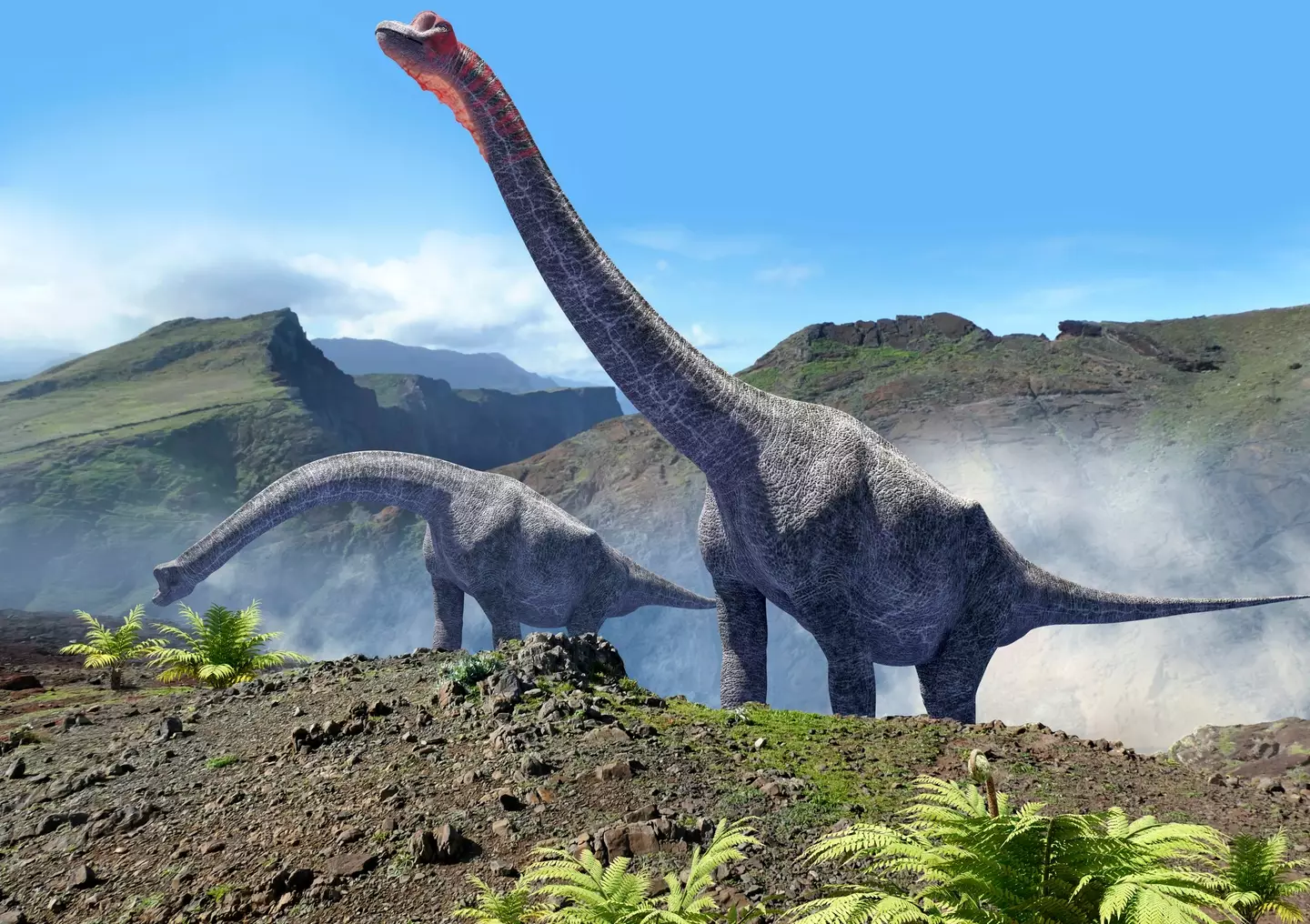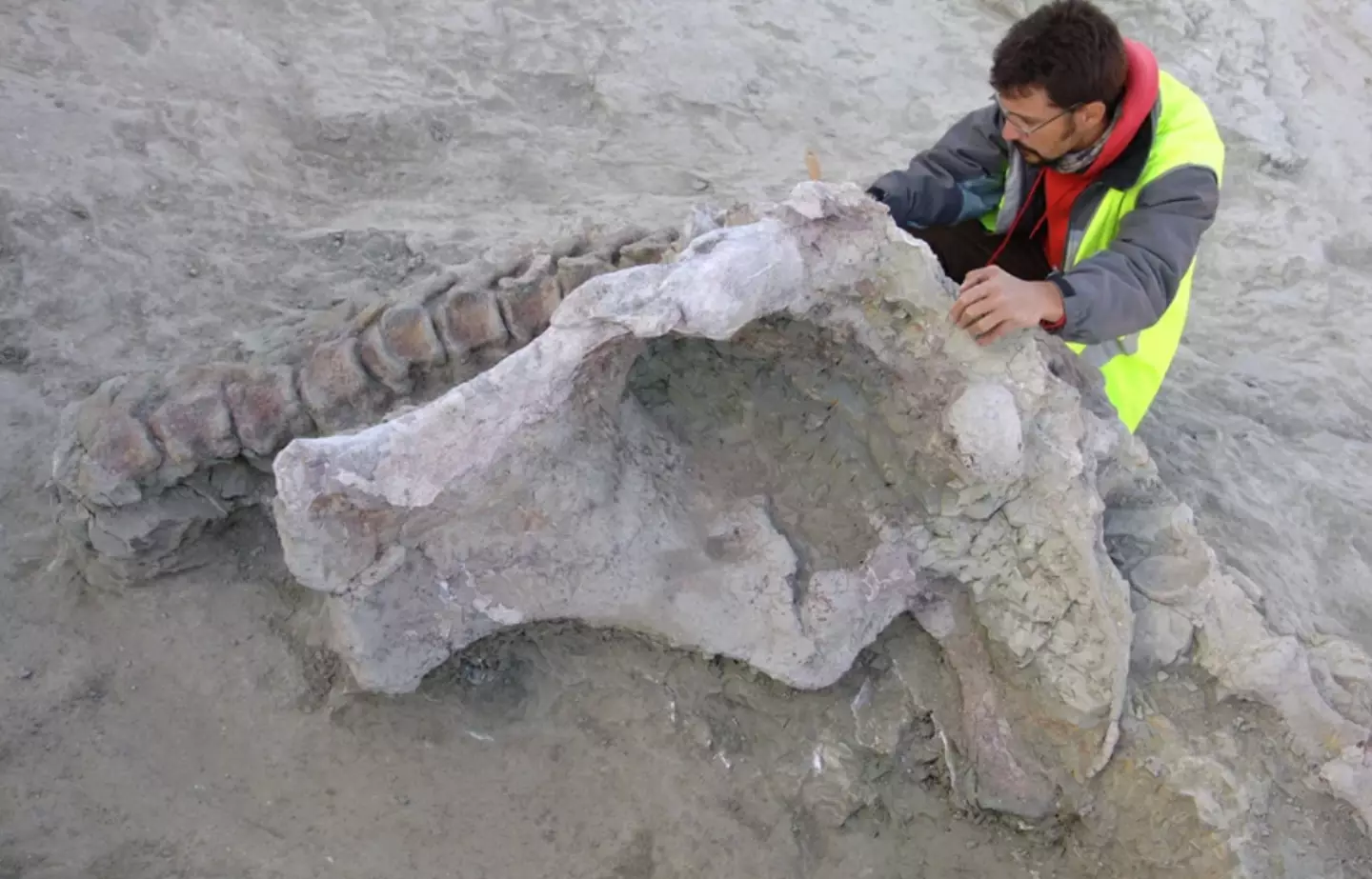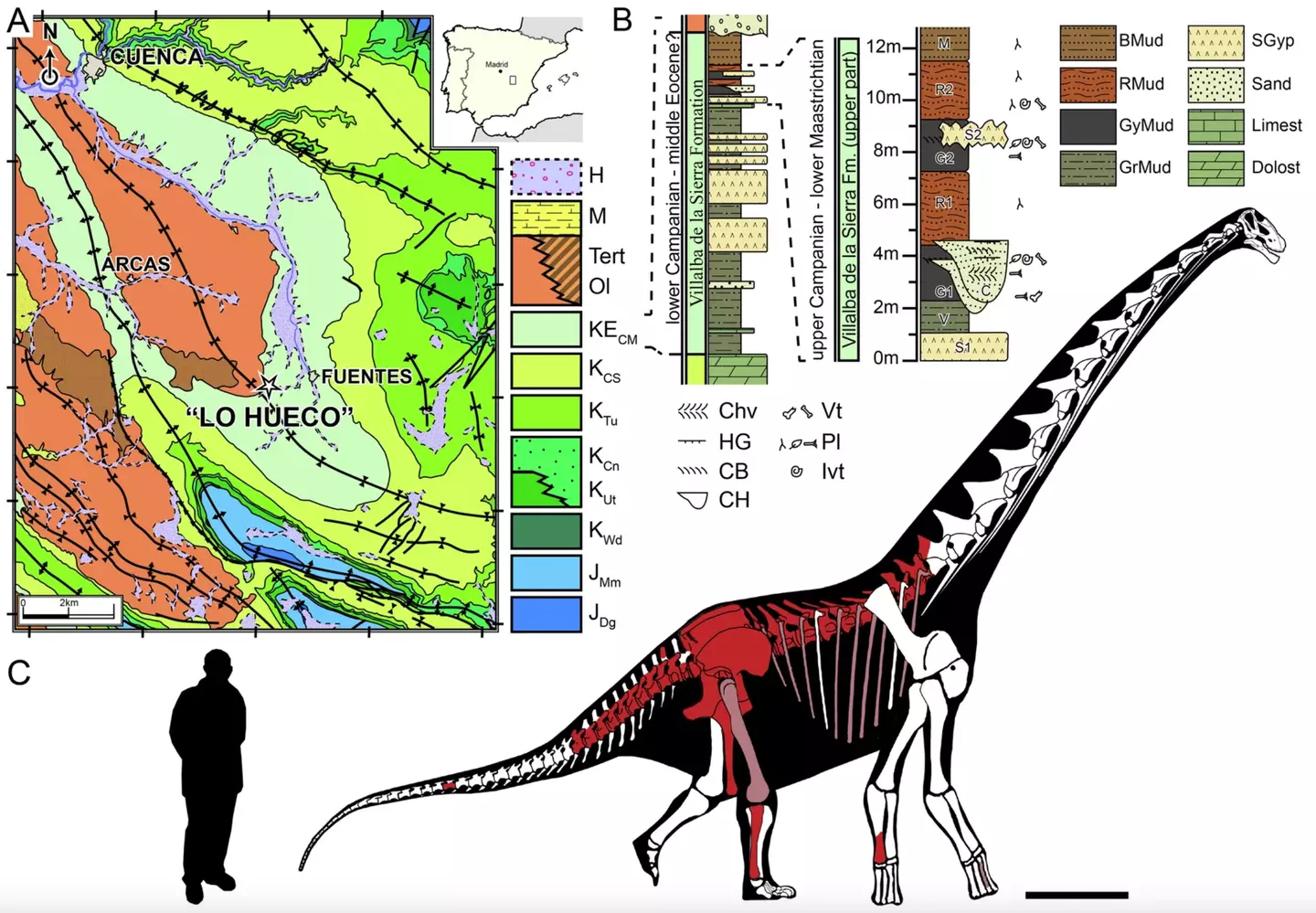A colossal new dinosaur species has been unearthed.
Though it feels like we’ve just discovered this giant, it actually roamed the Earth around 75 million years ago, according to paleontologists.

This new species belongs to the sauropod group, known for their massive size, long necks, tails, and strong, pillar-like legs, much like the Brontosaurus.
Discovered in Spain, this dinosaur has been named Qunkasaura pintiquiniestra. It lived during the Cretaceous period and is a member of the titanosaur family, the largest dinosaurs known to have existed.
This discovery was made as the Spanish government began the construction of a high-speed railway line between Madrid, the capital, and Valencia on the east coast.
The fossil was found at the Lo Hueco site near Cuenca, a town in central Spain.

This isn’t the only dinosaur found at the site; multiple specimens, mainly from the sauropod family, were uncovered.
The site, discovered in 2007, has yielded over 12,000 fossils since then.
The study, published in the Communications Biology journal, notes that the Qunkasaura discovery is one of the most complete sauropod skeletons found in Europe, providing invaluable insights into these dinosaurs.
The particular fossil found is believed to have died before reaching full maturity, as its vertebrae are ‘completely sutured,’ explained Pedro Mocho, a paleontologist at the University of Lisboa’s faculty of sciences who led the discovery, to ABC News.
The discovery has garnered global interest among paleontologists because Europe was an ‘insular environment’ when this dinosaur existed.

This insular habitat typically limited the size of its inhabitants.
Mocho said: “A lot of dinosaurs are small because they have small areas to live in, so they have a small amount of resources.”
“So, generally, the animals associated with insular environments are relatively small in some cases, and others, the opposite happens.”
He anticipates more dinosaur fossils will be found at the site.
Mocho added: “We don’t know exactly how many bones we still have over there, but we still have some remains to collect.”
I’m definitely looking forward to hearing more about these fascinating discoveries.

